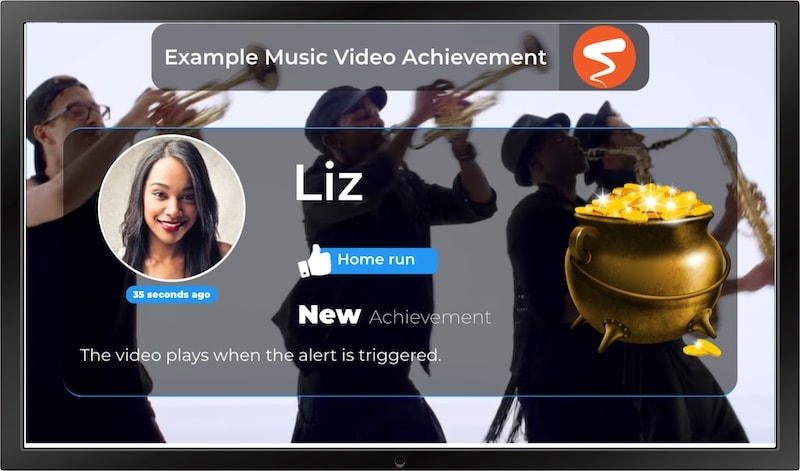Sales performance is a critical aspect of any organization’s success. The ability to increase sales performance directly impacts revenue growth, team morale, and long-term business stability. By leveraging proven strategies and tools, businesses can unlock their teams’ full potential and achieve outstanding results. This article explores five actionable strategies, including insights from Spinify, that can help sales leaders boost productivity, streamline processes, and maximize results.
To truly enhance sales performance, it’s essential to understand the multifaceted nature of sales dynamics. This involves not only focusing on the numbers but also nurturing the human element of sales. A motivated and well-trained sales team is crucial for driving results. By investing in ongoing training and development, businesses can ensure their sales reps are equipped with the latest skills and knowledge to navigate the ever-evolving market landscape.
Moreover, fostering a collaborative environment where sales and marketing teams work in harmony can significantly amplify sales success. When these teams align their efforts, they create a seamless customer journey that enhances customer satisfaction and retention.
In addition to internal strategies, it’s vital to keep an eye on external factors that can affect sales performance. Market trends, economic shifts, and technological advancements can all play a role in shaping sales outcomes. By staying informed and agile, sales leaders can adapt their strategies to capitalize on new opportunities and mitigate potential risks.
Ultimately, improving sales performance is about creating a holistic approach that combines data-driven insights, strategic planning, and a supportive company culture. By doing so, organizations can not only meet their sales targets but also build a resilient sales force that thrives in any market condition.
1. Leverage Sales Gamification to Boost Performance
Sales gamification is an innovative way to motivate your sales team by introducing game-like elements into the sales process. It turns routine activities into exciting challenges, fostering friendly competition and heightened engagement. By incorporating elements such as point scoring, leaderboards, and rewards, sales gamification taps into the innate human desire for competition and achievement.

This approach not only boosts motivation but also enhances team collaboration as sales reps work towards common goals. Additionally, gamification provides a platform for recognizing individual achievements, which can lead to increased job satisfaction and retention. Implementing sales gamification can also offer valuable insights into sales performance metrics, allowing sales managers to identify high performers and areas that may need improvement.
Ultimately, sales gamification creates a dynamic and interactive environment that drives sales success and fosters a culture of continuous improvement.
Benefits of Sales Gamification
- Enhanced Engagement: Sales gamification transforms routine tasks into exciting challenges, keeping sales reps engaged and motivated.
- Improved Morale: Recognizing achievements keeps sales team morale high.
- Increased Productivity: Competitive leaderboards and badges motivate reps to exceed expectations.
- Data-Driven Motivation: Real-time performance tracking highlights progress and inspires action.
- Skill Development: Gamification encourages continuous learning and improvement, helping sales reps develop new skills and strategies.
- Team Collaboration: By fostering friendly competition, gamification enhances teamwork and collaboration among sales team members.
- Higher Retention Rates: Engaged and motivated sales reps are more likely to stay with the company, reducing turnover rates.
- Data-Driven Motivation: Real-time performance tracking highlights progress and inspires action.
How Spinify Makes Gamification Simple
Spinify’s sales gamification platform transforms mundane tasks into engaging competitions. Features like customizable leaderboards, real-time progress tracking, and rewards for hitting sales targets energize sales teams and encourage collaboration.
2. Streamline the Sales Process for Efficiency
An efficient sales process is the backbone of any successful sales team, directly impacting sales performance and productivity. By streamlining workflows, sales reps can focus more on selling rather than getting bogged down by administrative tasks. Simplifying the sales process involves identifying and eliminating redundancies, automating repetitive tasks, and ensuring that each step adds value to both the sales team and the customer.
Key Strategies for Streamlining Sales Processes
- Automate Repetitive Tasks: Utilize CRM tools to automate follow-ups, data entry, and other routine tasks, freeing up time for sales reps to engage with prospects and close deals.
- Align Sales and Marketing Teams: Ensure consistent messaging and a seamless handoff between marketing and sales. This alignment helps in nurturing leads more effectively and improving conversion rates.
- Shorten the Sales Cycle Length: Identify bottlenecks in the sales process and work to eliminate them. A shorter sales cycle means quicker deal closures and improved cash flow.
- Regularly Audit Processes: Conduct regular reviews of the sales process to ensure it remains effective and efficient. This involves gathering feedback from sales reps and making necessary adjustments to optimize performance.
- Leverage Technology: Invest in sales tools and platforms that enhance efficiency, such as lead scoring systems, sales analytics, and communication tools.
Benefits of Streamlining Sales Processes
Streamlining the sales process offers numerous benefits, including increased productivity, improved customer experience, and higher sales revenue. By minimizing unnecessary steps, sales teams can operate more efficiently, leading to quicker decision-making and faster response times. Additionally, a streamlined process enhances customer satisfaction by providing a smoother buying journey, ultimately boosting customer retention rates.
Recommended Tools for Sales Process Optimization
Platforms like HubSpot CRM and Spinify are invaluable for automating workflows, managing sales pipelines, and tracking progress in real-time. These tools provide valuable insights into sales performance metrics, helping sales managers make data-driven decisions and optimize their strategies for better results.
In conclusion, streamlining the sales process is essential for boosting sales performance and achieving sales targets. By focusing on efficiency and leveraging the right tools, sales leaders can create a robust sales process that drives success and fosters a culture of continuous improvement within the sales organization.
A cluttered or inefficient sales process can hinder your team’s productivity. Simplifying and streamlining workflows ensures sales reps spend more time selling and less time managing administrative tasks.
Key Steps to Streamline Sales Processes
- Automate repetitive tasks like email follow-ups using CRM tools.
- Align sales and marketing teams to maintain consistent messaging.
- Shorten the sales cycle length by identifying and removing bottlenecks.
- Regularly audit processes to ensure they remain effective.
Recommended Tools for Sales Process Optimization
Platforms like HubSpot CRM and Spinify help automate workflows, manage pipelines, and track progress in real time.
3. Focus on Key Sales Performance Metrics
Tracking and analyzing the right sales performance metrics provides valuable insights into areas for improvement. These metrics help sales leaders make informed decisions and adjust strategies to achieve better results. By focusing on key indicators such as sales revenue, average deal size, customer acquisition cost, and sales cycle length, sales managers can pinpoint strengths and weaknesses within the sales process.
This comprehensive understanding enables them to tailor coaching and training programs to address specific needs, ultimately enhancing the overall sales team’s performance. Additionally, these metrics can reveal trends and patterns that might otherwise go unnoticed, allowing sales leaders to proactively adjust their strategies in response to market changes or shifts in customer behavior. By continuously monitoring these metrics, organizations can not only improve sales performance but also ensure alignment with broader business objectives, driving long-term success and sustainability.
Essential Metrics to Monitor and Analyze
Monitoring and analyzing essential sales performance metrics is crucial for understanding and improving sales team performance. Here’s a closer look at some key metrics:
- Sales Revenue: The total income generated from sales, which provides a direct measure of the company’s financial success.
- Average Deal Size: The average value of closed deals, helping to identify trends in customer spending and opportunities for upselling or cross-selling.
- Customer Acquisition Cost (CAC): The cost associated with acquiring a new customer, which is vital for evaluating the efficiency of sales and marketing efforts.
- Sales Cycle Length: The time it takes to close a deal, offering insights into process efficiency and areas that may require streamlining.
- Customer Retention Rate: The percentage of customers who continue to do business with the company over a given period, highlighting the effectiveness of customer satisfaction strategies.
- Sales Conversion Rate: The percentage of leads that convert into actual sales, indicating the effectiveness of the sales process and the quality of leads generated.
- Sales Productivity Metrics: These metrics evaluate the efficiency of individual sales reps and the overall sales team, helping to identify high performers and areas for improvement.
By regularly tracking these metrics, sales managers can gain valuable insights into their team’s performance, identify potential areas for growth, and implement strategies to enhance sales success. This data-driven approach ensures that sales teams are aligned with business objectives and can adapt to changing market conditions for sustained growth.
4. Create a Culture of Recognition and Incentives
Recognition and incentives are crucial for maintaining high morale and motivation within a sales team. A well-structured incentive program rewards top performers while encouraging others to reach their full potential. By acknowledging the hard work and achievements of sales reps, companies can foster a positive and competitive environment that drives performance. Incentives can take various forms, from monetary bonuses and commissions to non-monetary rewards such as public recognition, career advancement opportunities, or extra time off.

In addition to boosting morale, a robust incentive program can help align individual goals with the company’s objectives, ensuring that every sales team member is working towards common targets. This alignment not only enhances productivity but also contributes to a cohesive team dynamic where everyone feels valued and motivated to contribute their best efforts. Furthermore, when sales reps know their achievements are recognized and rewarded, they are more likely to remain loyal to the organization, reducing turnover rates and fostering a stable, experienced sales force.
The success of an incentive program depends on its ability to be fair, transparent, and tailored to the unique needs of the sales team. Regularly reviewing and updating the program ensures it remains relevant and effective in motivating sales professionals to achieve their full potential and drive the company’s growth.
Tips for a Successful Incentive Program
Creating an effective incentive program requires careful planning and execution to ensure it resonates with your sales team and aligns with company objectives. Here are some additional tips to consider:
- Understand Team Dynamics: Before designing an incentive program, take the time to understand the unique dynamics and motivators of your sales team. Tailor incentives to fit the diverse preferences and personalities within the team to maximize engagement and effectiveness.
- Set Clear and Achievable Goals: Clearly define the goals that sales reps need to achieve to earn incentives. These goals should be challenging yet attainable, encouraging sales reps to stretch their capabilities without feeling overwhelmed.
- Communicate Transparently: Maintain open communication about the incentive program’s criteria, rewards, and timelines. Transparency ensures that all team members understand how they can participate and benefit from the program.
- Incorporate Regular Feedback: Solicit feedback from sales reps regularly to gauge their satisfaction with the incentive program. Use this feedback to make necessary adjustments and improvements, ensuring the program remains relevant and motivating.
- Diversify Incentive Options: Offer a range of incentives to cater to different preferences. While monetary rewards are popular, consider incorporating experiential rewards, such as team outings or professional development opportunities, to add variety and appeal.
- Celebrate Successes Publicly: Public recognition of achievements can significantly boost morale and motivation. Celebrate successes in team meetings or through company-wide announcements to acknowledge top performers and inspire others.
- Ensure Fairness and Inclusivity: Design the incentive program to be fair and inclusive, providing equal opportunities for all sales reps to participate and succeed. Avoid favoritism and ensure that the criteria for earning incentives are objective and transparent.
By implementing these strategies, you can create a successful incentive program that not only drives sales performance but also fosters a positive and motivated sales environment. This approach encourages sales reps to consistently perform at their best, contributing to the overall success and growth of the organization.
- Offer a mix of monetary rewards (bonuses) and non-monetary recognition (public praise).
- Align incentives with company goals, such as boosting sales revenue or improving customer satisfaction.
- Use gamification to make rewards more interactive and engaging.
5. AI Coaching: Revolutionizing Sales Performance Management
Artificial Intelligence (AI) is transforming the way businesses approach sales coaching, offering smarter, faster, and more personalized solutions to enhance team performance. AI coaching leverages data and machine learning to provide actionable insights, track progress, and deliver targeted feedback, empowering sales teams to achieve their full potential. Spinify, a leading platform in sales performance management, is at the forefront of this innovation with its AI Coaching Agent.
What is AI Coaching?
AI coaching uses intelligent algorithms to analyze performance metrics, identify areas of improvement, and provide personalized coaching recommendations. Unlike traditional coaching methods, AI-driven systems work in real-time, delivering instant feedback and adaptive strategies tailored to individual sales reps’ needs.
Benefits of AI Coaching for Sales Teams
- Personalized Feedback: AI coaching agents analyze each sales rep’s performance to offer tailored suggestions, ensuring a more effective learning experience.
- Real-Time Insights: Instant feedback allows sales reps to address challenges immediately, boosting productivity and confidence.
- Scalability: AI coaching can handle large teams simultaneously, making it ideal for growing organizations.
- Consistent Guidance: Ensures all team members receive standardized, high-quality coaching, reducing disparities in skill development.
- Enhanced Data Utilization: AI tools like Spinify turn raw sales data into actionable insights, helping teams focus on what truly matters.
Spinify’s AI Coaching Agent: A Game-Changer for Sales Performance
Spinify’s AI Coaching Agent takes sales coaching to the next level by combining advanced AI technology with user-friendly features designed to enhance team performance. This innovative tool offers:
- Automated Insights: Spinify’s AI analyzes sales performance metrics to highlight strengths and pinpoint weaknesses. This allows sales leaders to focus on areas with the greatest improvement potential.
- Adaptive Strategies: The AI Coaching Agent evolves its recommendations based on real-time data, ensuring that guidance remains relevant and impactful as market conditions or team dynamics change.
- Actionable Goals: Spinify’s platform helps sales reps set achievable, data-driven goals while providing the steps needed to meet them.
- Engaging Experience: Integrated with Spinify’s gamification features, the coaching agent makes learning interactive, motivating reps through rewards and recognition.
How Spinify’s AI Coaching Enhances Sales Team Performance
- Boosts Efficiency: Sales managers can save time by relying on AI to handle routine analysis and reporting. This allows them to focus on strategic planning and mentoring.
- Improves Team Morale: By providing real-time, constructive feedback, Spinify’s AI Coaching Agent builds confidence and encourages continuous improvement among sales reps.
- Drives Results: Combining coaching with actionable insights and gamification ensures that sales teams remain engaged and aligned with organizational objectives.
Explore more about Spinify’s AI Coaching Agent and how it’s reshaping the sales landscape by visiting Spinify’s AI Coaching page.
Why AI Coaching is the Future of Sales Performance
AI-powered coaching is no longer a luxury but a necessity for competitive organizations. As sales processes become increasingly complex, tools like Spinify’s AI Coaching Agent help sales teams stay ahead by offering intelligent, scalable, and results-driven coaching solutions.
By integrating AI into your coaching framework, you can create a sales culture that thrives on data, innovation, and continuous growth—ensuring your organization consistently meets and exceeds its performance goals.
Continuous Improvement: Strategies for Sustaining High Sales Performance
To maintain and enhance sales performance over time, it is crucial to adopt a mindset of continuous improvement. This involves regularly evaluating and refining sales strategies, processes, and team dynamics to ensure alignment with evolving market conditions and customer needs. Here are some key strategies to sustain high sales performance:
- Regular Training and Development: Invest in ongoing training programs that equip sales reps with the latest skills and knowledge. This keeps the team agile and ready to tackle new challenges.
- Feedback Loops: Create a culture where feedback is encouraged and valued. Regular feedback sessions help identify areas for improvement and provide opportunities for professional growth.
- Data-Driven Decision Making: Utilize sales performance metrics to make informed decisions. By analyzing data, sales leaders can identify trends, anticipate market shifts, and adjust strategies accordingly.
- Innovation and Adaptability: Encourage a culture of innovation where team members are motivated to experiment with new sales techniques and technologies. Being adaptable ensures the team can pivot quickly in response to changes.
- Customer-Centric Approach: Continuously seek to understand and meet customer needs. A customer-focused strategy not only improves satisfaction and retention but also drives sales success.
By embedding these strategies into the sales organization’s culture, businesses can create a resilient team capable of sustaining high performance and achieving long-term success.




